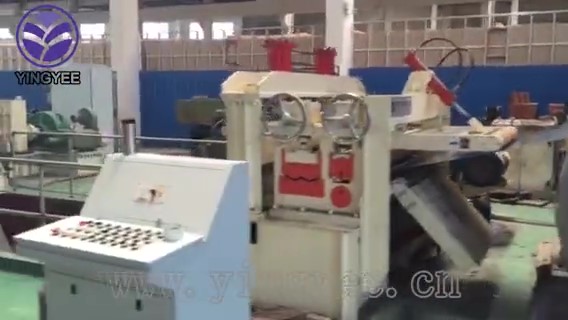
Understanding Storage Rack Beam Machines A Comprehensive Overview
Storage rack beam machines play a vital role in modern warehousing and logistics operations. These sophisticated systems are designed to optimize storage efficiency, enhance accessibility, and maximize space utilization. As industries continue to evolve, the need for effective storage solutions has become increasingly significant, leading to innovations in rack beam technologies.
What is a Storage Rack Beam Machine?
At its core, a storage rack beam machine refers to the equipment and system used to manufacture or assemble storage racks featuring beam structures. These racks typically consist of horizontal beams that support vertical columns, allowing for the storage of various goods and products. The design of these systems follows specific engineering principles to ensure stability, safety, and maximum load-bearing capacity.
Benefits of Storage Rack Beam Machines
One of the primary advantages of utilizing storage rack beam machines is their ability to create customizable storage solutions. Businesses can tailor the dimensions and configurations of the racks to meet their unique requirements, accommodating different sizes and weights of inventory. This flexibility is invaluable for industries such as retail, manufacturing, and distribution, where product lines and storage needs can vary widely.
Moreover, storage rack beam machines contribute to improved organization within warehouses
. By efficiently categorizing and storing items, companies can streamline their retrieval processes, significantly reducing the time spent locating products. Enhanced organization not only boosts operational efficiency but also minimizes the risk of errors, ensuring that the right items are dispatched to customers promptly.Types of Storage Rack Systems
There are several types of storage rack systems that can be produced utilizing beam machines, each suited to specific applications

1. Selective Racking This is the most common type, allowing direct access to all pallets. It enables efficient inventory management and is particularly useful for businesses with a diverse range of products.
2. Drive-In Racking Ideal for high-density storage, drive-in racks allow forklifts to enter the rack structure for loading and unloading. This design minimizes aisle space, maximizing storage potential.
3. Pallet Flow Racking This system utilizes gravity to move pallets on inclined rollers, facilitating a first-in, first-out (FIFO) inventory flow. It's commonly used for perishable goods or products with limited shelf life.
4. Cantilever Racking Designed for storing long or bulky items, cantilever racks consist of arms extending from a central column, providing stable support for materials like lumber or piping.
Technological Advancements
The innovation of storage rack beam machines has seen significant advancements in technology. Automation and robotics are increasingly being integrated into these systems, enhancing efficiency and reducing labor costs. Automated guided vehicles (AGVs) can navigate warehouse floors, transporting goods to and from storage locations with minimal human intervention.
Additionally, the implementation of data management software enables real-time tracking of inventory levels and locations. This technological integration not only facilitates better inventory control but also provides valuable insights for optimizing storage layouts and improving overall efficiency.
Conclusion
In conclusion, storage rack beam machines are crucial components in the realm of warehousing and logistics. They offer businesses the versatility and efficiency needed to optimize their storage solutions, paving the way for improved operational performance. As industries continue to adopt advanced technologies, the future of storage rack systems promises even greater innovation, paving the way for enhanced productivity and efficiency in supply chain operations. With the growing demand for effective storage solutions, investing in a reliable storage rack beam machine is not just a choice but a strategic necessity for businesses aiming to thrive in a competitive landscape.